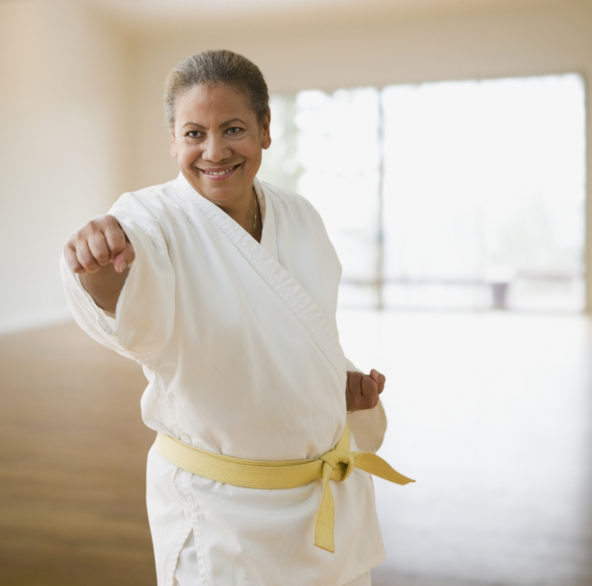Easy tips to help keep the seniors in your life upright
A few years ago, my mother fell in her driveway. Fortunately, she suffered only minor bruises. But that fall came on the heels of a slip down the front steps at a relative’s house. (Quick-handed family members caught her before she went all the way down.) She’d already taken a tumble at a local gas station, where she damaged an eye and required surgery. Her neighbor, who has osteoporosis, slipped and fell on a patch of ice in her church parking lot a while back; she fractured several vertebrae in her back and spent nearly a year recovering. The neighbor is still nervous about stepping outside, especially during winter.
Before you write this off as just an odd quirk in my mother’s neighborhood, it’s not. With their falls, my mom and her neighbor, both in their mid-70s, joined a scary club. As we age, physical changes and chronic health conditions (and sometimes the medications used to treat those conditions) can increase significantly the risk of falling. Falls, according to the National Council on Aging, are the leading cause of injury death for older Americans. Falls are so common, in fact, that every 15 seconds an older person goes to an emergency room due to one. Research from the Centers for Disease Control and Prevention has found that more than 2.3 million fall-related injuries are treated in emergency departments each year, including more 650,000 hospitalizations and more than 20,000 deaths.
Here’s what else we know:
- One-third of Americans aged 65 and older falls each year.
- Every 29 minutes an older adult dies from a fall.
- Falls are the leading cause of fatal injury and the most common cause of nonfatal trauma-related hospital admissions among older adults. In 2000, the fall injuries cost more than $19 billion; that number is expected to increase as the population ages and could skyrocket to $54.9 billion by 2020.
- After a fall, people 75 and older are much more likely to be admitted to long-term care facilities for a year or more.
- Older women are more than twice as likely to fracture their hips than men.
- More than 90 percent of hip fractures are due to falls.
Despite these grim statistics, there are ways to prevent falls and reduce the risk of serious injury.
Make an appointment with your doctor. Discuss any previous falls during that appointment. When, where and how did you fall? Does a health condition (i.e., some ear and eye disorders) increase your risk of a fall? What medications do you take? Make a list of your prescription and over-the-counter medications and supplements (or bring them with you to the appointment). Do any make you feel dizzy or lightheaded when you take them? Make a note and share this information with the doctor. He or she can review your meds for side effects and interactions that may increase your risk of falling.
Stay active. Tai-chi, yoga and other balance exercises improve coordination, strength and flexibility, all of which reduce the risk of falls. Get your doctor’s OK before starting any exercise program.
Wear the right shoes. Slippers, high heels or stocking feet can make you slip and fall. Choose sturdy shoes with nonskid soles.
Hazard-proof your home. Stairways are the main reasons for falls, so install railways on both sides. Remove loose rugs or secure them with double-sided tape. Improve lighting to keep your home brightly lit. Clear up clutter and move furniture from high-traffic areas. Use a grasping tool instead of a chair or stepladder to get out-of-reach items.
Invest in fall-prevention products. Canes and walkers help seniors feel steady on their feet. Choose a device that is the correct height and that has rubber traction on the bottom. Place fall mats (1- or 2-inch thick cushioned mats) in areas where a person could be injured from a fall, such as the side of a bed, by a toilet or in front of a chair. Install grab bars in the shower and near the toilet.
Follow these tips because falls do not have to be an inevitable part of aging.







